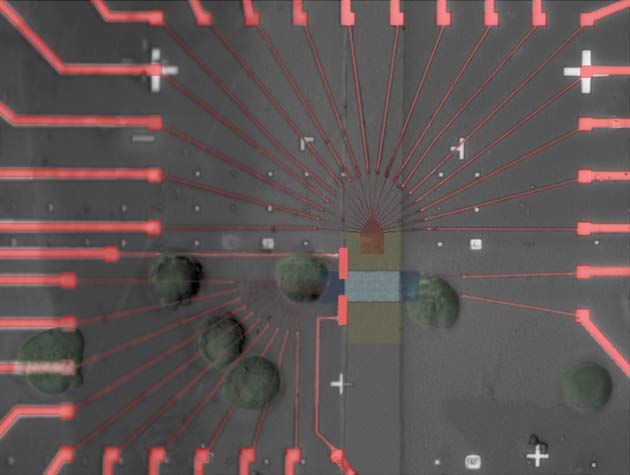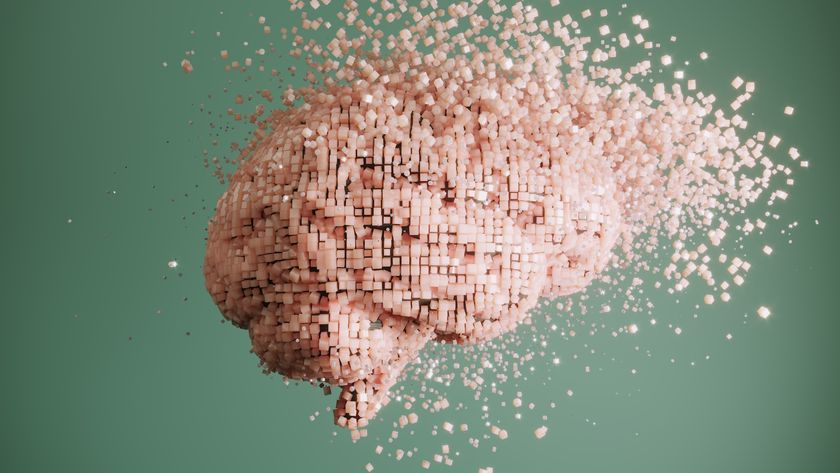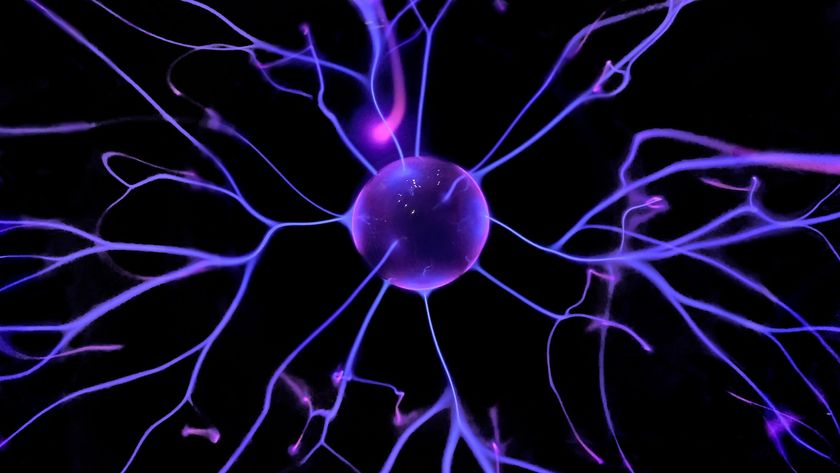New Memory Circuit the Size of a Single Blood Cell

The next generation of computer technology is already here, according to a group of West Coast scientists—and it arrived in a very small package.
Researchers at the California Institute of Technology have produced the world's densest memory circuit—one that industry analysts didn't expect to see for another decade and which likely won't show up in consumer products for at least that long. The tiny circuit is the size of a single white blood cell, but so powerful it can store the entire Declaration of Independence with room left over, the researchers say.
While we won’t see changes in our everyday gadgets—at least not soon—scientists say the advance marks a technological watershed.
“The primary metric the semiconductor industry uses to describe how technology is progressing is the density between the two most closely spaced wires in a memory circuit,” said James Heath, a Caltech professor of chemistry whose group built the chip.
This one boasts 100 billion bits per square centimeter, roughly 100 times more tightly packed than memory circuits in use now, setting a “world record for electric circuitry,” Heath said.
The research, reported last week in the journal Nature, could pave the way for advances in fields as disparate as biomedicine and energy efficient product development, say its authors. For medical research, the Lilliputian technology could enable extremely sophisticated sensors to detect single proteins or even genes. It could also have implications for thermal electrics, in which gadgets take heat—from the sun say—and convert it to voltage.
Still, the chip is not as reliable as the memory on most home computers and since according to Heath, silicon is “lousy” for this type of circuit, the industry would have to move away from using it—a big move.
Sign up for the Live Science daily newsletter now
Get the world’s most fascinating discoveries delivered straight to your inbox.
The breakthrough is not the product but the process by which it’s made, which could be honed to generate more commercially viable items in the future, the researchers say.
- The World's Smallest Thinker
- Scientists Create Molecule-Size Keypad Lock
- Gallery: Micromachines












